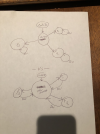w_b
Well-Known Member
It’s easier to auto reinvest, but yes you can do it yourself. I tend to not auto reinvest on things that pay infrequently like mutual funds. You are correct, it’s easier to precision rebalance manually, and no chance of getting overweight on good payers vs. lesser guys. If you let the cash build up then you lose some of the benefit of DCA, but, just because it’s not working for you while it’s sitting in cash.Non-Investment Account opinions wanted:
If dollar cost averaging, does it make sense to re-invest dividends, or not re-invest dividends? Assumption is at the end of the year the total amount invested is the same.
So two methods:
Situation #1 - X dollar cost average investments + Dividends re-invested = Z total yearly investments
Situation #2 - Y dollar cost average investments + Dividends not re-invested = Z total year investments
Is one of the above better than the other? Or a wash? My only reason for situation #2 possibly being better is it may make re-balancing easier and possibly less chance of being overweight one category of investments.
Paging @Patrick
Also, if I think I might be closing out a position soon ( very rare for me) I’ll likely stop reinvesting dividends to minimize/ eliminate any short term gains/ losses.







